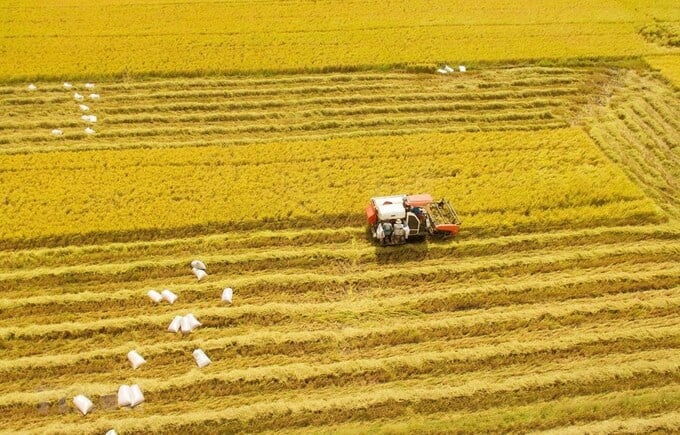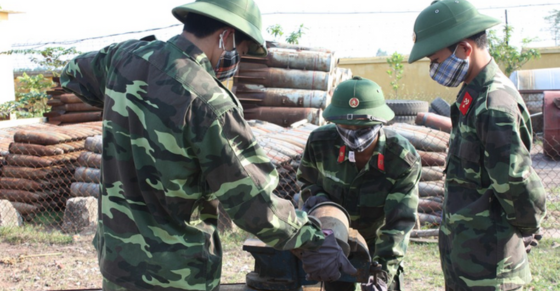By 2030, 1 million hectares of high-quality, low-emission rice-farming areas to be formed in Vietnam
By 2030, 1 million hectares of high-quality, low-emission rice-growing areas will be formed in Vietnam, right? – Duc Anh (Khanh Hoa)

By 2030, 1 million hectares of high-quality, low-emission rice-farming areas to be formed in Vietnam (Internet image)
Regarding this issue, LawNet would like to answer as follows:
On November 27, 2023, the Prime Minister issued Decision 1490/QD-TTg for 2023 on approving the Scheme "Sustainable development of one million hectares specializing in high-quality and low-emission rice cultivation associated with green growth in the Mekong Delta until 2030".
By 2030, 1 million hectares of high-quality, low-emission rice-farming areas to be formed in Vietnam
By 2030, forming 1 million hectares of high-quality, low-emission rice-growing areas is one of the goals by 2030 of the Scheme "Sustainable development of one million hectares specializing in high-quality and low-emission rice cultivation associated with green growth in the Mekong Delta until 2030"
Specifically, the objectives in this Scheme are as follows:
* General objective
Forming one million hectares of high-quality and low-emission rice-farming areas associated with reorganizing the production system along the value chain and applying sustainable farming processes to increase the value and sustainable development of the rice industry, improve production and business efficiency, increase the income and life of rice growers, protect the environment, adapt to climate change, and reduce greenhouse gas emissions, contributes to implementing Vietnam's international commitments.
* Detailed objectives
(1) Target until 2025
- Regarding scale: the cultivated area of the high-quality and low-emission rice-farming area reached 180,000 hectares.
- Regarding sustainable farming: In areas specializing in high-quality and low-emission rice cultivation, reduce the amount of rice seeds sown to 80 - 100 kg/hectare, reduce the amount of chemical fertilizers and pesticides of chemical origin by 20%, and reduce the amount of irrigation water by 20% compared to traditional farming; 100% of the area applies at least one sustainable farming process such as 1 must 5 reduction, alternating wet and dry irrigation, sustainable rice production standards (Sustainable Rice Platform - SRP), good agricultural practice standards are certified and a growing area code is issued.
- Regarding production reorganization:
+ 100% of production areas specializing in high-quality and low-emission rice cultivation have links between businesses and cooperative groups, cooperatives, or farmer organizations in product production and consumption.
+ Synchronous mechanization rate reaches over 50% of the area.
+ Over 200,000 households apply sustainable farming processes.
- Regarding environmental protection and green growth:
+ Post-harvest loss rate is less than 10%.
+ 70% of straw in specialized farming areas is collected from the fields and processed for reuse.
+ Reduce greenhouse gas emissions by over 10% compared to traditional rice farming.
- Regarding rice growers' income and added value: Added value in the rice chain increased by 30%, of which the profit margin of rice growers reached over 40%;
- Brand building and export: The amount of exported rice with high quality and low emissions accounts for over 20% of the total amount of rice exported in the entire specialized farming region.
(2) Target until 2030
- Regarding scale: the cultivated area of the high-quality and low-emission rice-farming area reached one million hectares.
- Regarding sustainable farming: reduce the amount of rice seeds sown to less than 70 kg/hectare, reduce the amount of chemical fertilizers and pesticides of chemical origin by 30%, and reduce irrigation water by 20% compared to traditional farming; 100% of the area applies at least one sustainable farming process, such as 1 must 5 reduction, SRP, alternating dry irrigation and good agricultural practice standards are certified and given a planting area code.
- Regarding production organization:
+ 100% of production areas specializing in high-quality and low-emission rice cultivation have links between businesses and cooperative groups, cooperatives, or farmer organizations in product production and consumption.
+ Synchronous mechanization rate reaches over 70% of the area.
+ Over 1,000,000 households apply sustainable farming processes.
- Regarding environmental protection and green growth:
+ Post-harvest loss rate is less than 8%.
+ 100% of straw is collected from the fields and processed for reuse.
+ Reduce greenhouse gas emissions by over 10% compared to traditional rice farming.
- Regarding rice growers' income, added value: added value in the rice chain increased by 40%, of which the profit margin for rice growers reached over 50%.
- Brand building and export: The amount of rice exported with high-quality, low-emission brands accounts for over 20% of the total rice export volume of the entire specialized farming region.
More details can be found in Decision 1490/QD-TTg, which takes effect from the date of signing.
- Key word:
- rice-growing areas
- in Vietnam
- Number of deputy directors of departments in Vietnam in accordance with Decree 45/2025/ND-CP
- Cases ineligible for pardon in Vietnam in 2025
- Decree 50/2025 amending Decree 151/2017 on the management of public assets in Vietnam
- Circular 07/2025 amending Circular 02/2022 on the Law on Environmental Protection in Vietnam
- Adjustment to the organizational structure of the Ministry of Health of Vietnam: Certain agencies are no longer listed in the organizational structure
- Vietnam aims to welcome 22-23 million international tourists in Vietnam in 2025
-

- Emergency response and search and rescue organizations ...
- 10:29, 11/09/2024
-

- Handling of the acceptance results of ministerial ...
- 09:30, 11/09/2024
-

- Guidance on unexploded ordnance investigation ...
- 18:30, 09/09/2024
-

- Sources of the National database on construction ...
- 16:37, 09/09/2024
-

- General regulations on the implementation of administrative ...
- 11:30, 09/09/2024
-

- Notable new policies of Vietnam effective as of ...
- 16:26, 11/04/2025
-
.Medium.png)
- Notable documents of Vietnam in the previous week ...
- 16:21, 11/04/2025
-
.Medium.png)
- Notable documents of Vietnam in the previous week ...
- 16:11, 02/04/2025
-
.Medium.png)
- Notable new policies of Vietnam to be effective ...
- 16:04, 02/04/2025
-
.Medium.png)
- Notable new policies of Vietnam effective from ...
- 14:51, 21/03/2025
 (1).png)
 Article table of contents
Article table of contents
